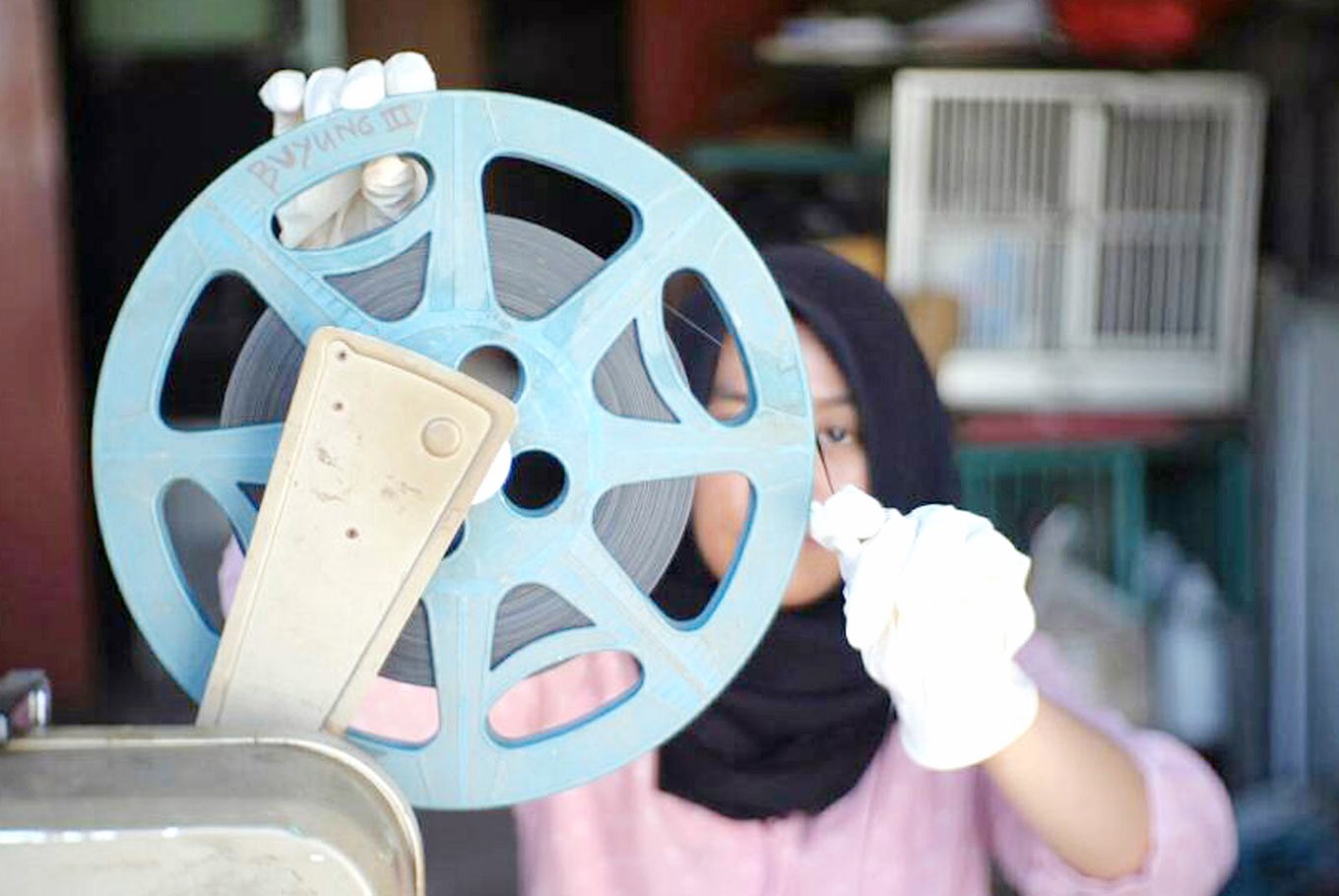Popular Reads
Top Results
Can't find what you're looking for?
View all search resultsPopular Reads
Top Results
Can't find what you're looking for?
View all search resultsFinding the cinematic culture of home movies
The documentary Golden Memories (Petite Histoire of Indonesian Cinema)introduces young filmgoers to home filmmakers they might not know.
Change text size
Gift Premium Articles
to Anyone
T
he documentary Golden Memories (Petite Histoire of Indonesian Cinema)introduces young filmgoers to home filmmakers they might not know.
Long before the rising popularity of social media, where people like to share videos of practically anything, from their baby’s milestones to K-pop concerts, preserving a visual record of family activities had already existed in Indonesia, during the era of Dutch colonialism.
This was made possible after Eastman Kodak’s 16-millimeter film in the United States, used for non-theatrical filmmaking or for low-budget motion pictures, entered the Dutch East Indies’ (now Indonesia) market three years after its introduction in 1923.
The technology enabled privileged amateurs to capture daily life in the form of videos for viewing at home with family and friends, creating a movie culture of their own. Called “home movies”, this part of Indonesian film history is rarely known or discussed.
Kwee Zwan Liang was among the first home filmmakers in the country. He was a Chinese descendant born and raised in Djatipiring, Cirebon, West Java. He began to make silent documentaries 18 years before Indonesia’s Independence Day in 1945.
His works can be traced in Golden Memories, which tracks home movies in the history of Indonesian cinema.
Released recently at the Goethe-Institut Jakarta in Menteng, Central Jakarta, it is the first documentary by Milisifilem, a Lenteng Forum-initiated platform aimed at producing and learning about movies.
To complete the documentary, its directors, Afrian Purnama, Mahardika Yudha and Syaiful Anwar, traveled from Jakarta to Cirebon and cities in the Netherlands, including Arnhem, Haarlem, Amsterdam, Zaandam and The Hague.
In The Hague, they visited the house of Liang, who produced home movies from 1927 to 1939 in the Dutch East Indies before moving to the Netherlands in 1957 and passing away two years later.
They met his children, who later showed them his motion picture equipment comprising the Cine-Kodak Model B camera and Kodascope Model C film projector. Together, they watched his movies.
Back in its prime, the camera equipment was deemed a luxury good as it could be purchased only by rich people, which included his father, who was the head of a laboratory in a sugar factory
in Djatipiring.
At Liang’s house in The Hague, only the digital version of Liang’s silent films was available as the original 16mm film is archived at EYE Filmmuseum in Amsterdam.
Liang filmed not only his family’s private activities, such as swimming and traveling with his luxurious Marmon and Cadillac cars, but also public events, such as a military parade, a soccer tournament, an automobile exhibition and the visit of king Prajadhipok from Siam.
His documentaries grabbed critics’ attention in 2002 during an exhibition titled “Van de kolonie niets dan goeds: Nederlands-Indië in Beeld, 1912-1942” (Good News from the Colony: The Dutch East Indies in Film, 1912-1942) at the Netherlands Film Museum in Amsterdam.
According to the three directors, Liang’s works were praised for having rich detail and offering alternative points of view to understand social life in Java, something that is different from what was shown in Dutch directors’ films.
Founded in 1910 to promote trade in the colonial territories of the Netherlands, the Colonial Institute, which is now the Royal Tropical Institute, made biased films by portraying Western colonizers as dynamic, innovative and modern, and contrasting them with local people, who were pictured as crude and superstitious.
Afrian said although “home movies” generally referred to amateur use, Liang could not be considered amateur.
“In his films, we found skilled cinematography techniques,” he said.
He said Liang, for example, could perfectly record fireworks at night and a train moving quickly from his car.
Liang is not the only home filmmaker featured in Golden Memories. There is also Rusdy Attamimi, who lives in Pondok Indah, South Jakarta. He is a former pilot who has made 8 mm films since going to the United Kingdom in the 1960s to study.
Home movies may mostly record the daily lives of its creators, but Liang and Rusdy’s works display the honesty and intimacy of past events that we can visit again and again.











